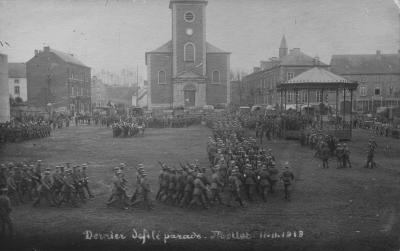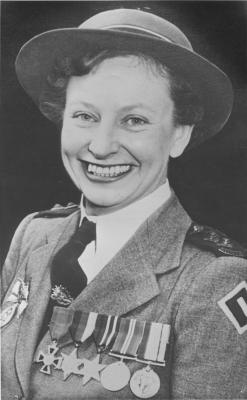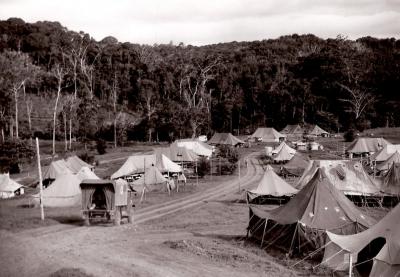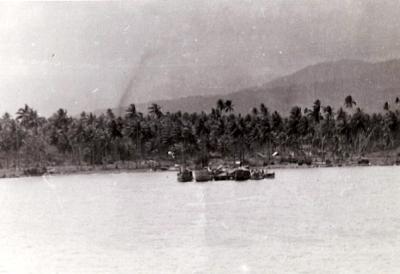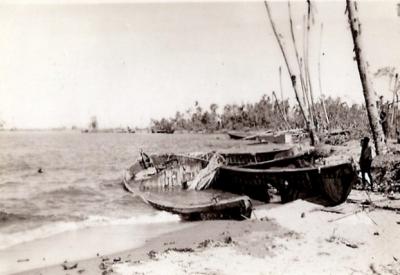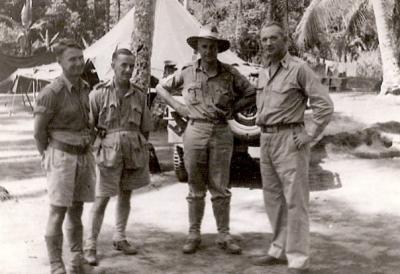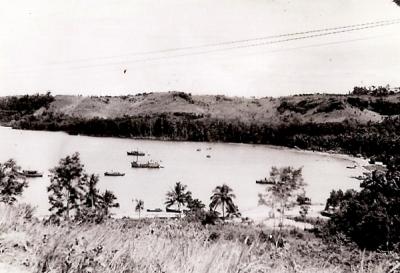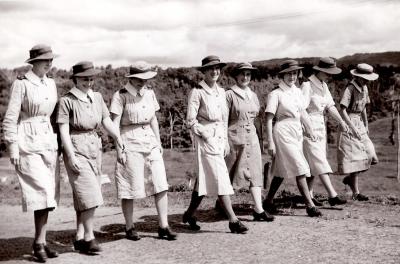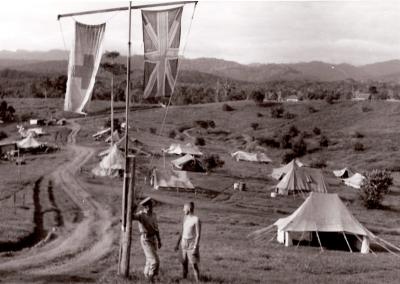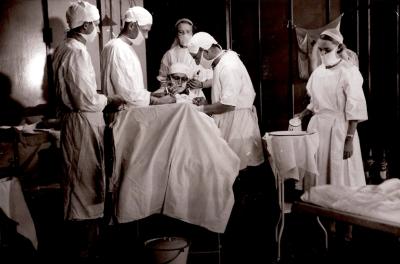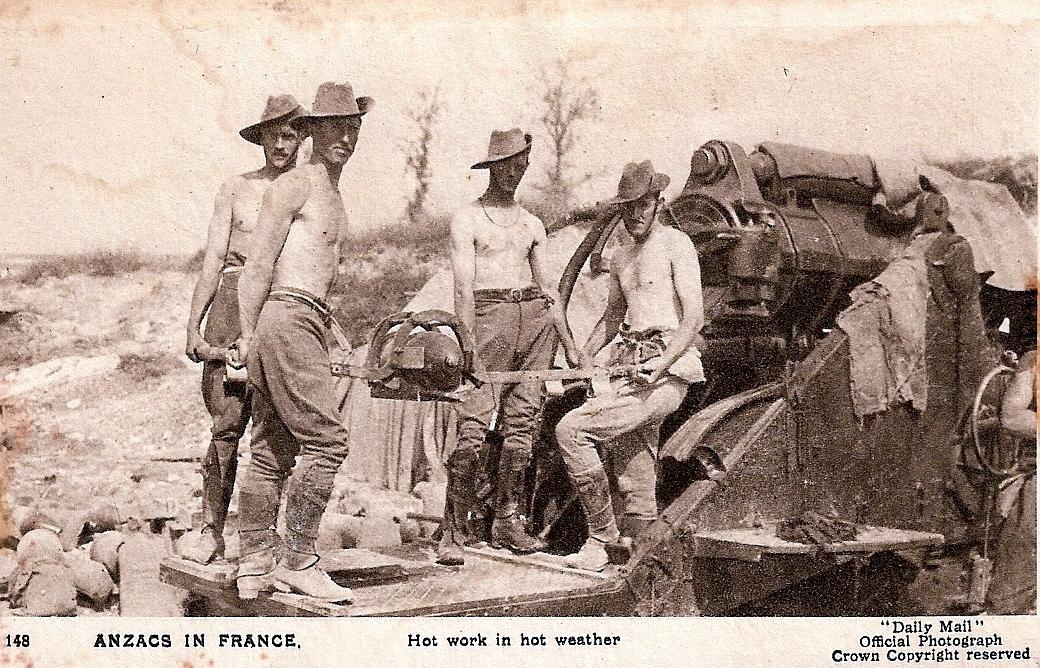World War 1, Europe, Heavy Artillery Group, 1917
1917Daily Mail photograph of Australian Heavy Artillery Group Gunners in action with a 9.2 inch howitzer.
The 9.2-inch Breech-Loading (BL) Howitzer was the largest artillery piece used by Australians in the war, and remains the largest used in land battle in the history of the Royal Regiment of Australian Artillery. These guns, the composition of their crews, and many of the areas of their operations, were different from the rest of the Australian Imperial Force (AIF).
Only one Australian battery – the 55th Heavy Artillery Battery – was equipped with the 9.2-inch (233-millimetre) howitzers. At first, the battery had just four guns, and this was later expanded to six. The battery, and the 54th Heavy Artillery Battery, which had 8-inch (203-millimetre) howitzers, on wheels, were placed together as the Australian Heavy Artillery Group (HAG). These two siege batteries, and their headquarters, moved from Britain to France in March 1916 and became the first Australian units to go into battle on the Western Front.
Unlike other formations of the AIF, which were created from civilian volunteers, the heavy batteries had been formed mostly from permanent artillerymen of the Royal Australian Garrison Artillery, with some reinforcements from the militia; the same regulars and citizens’ force soldiers who had been manning the forts guarding Australia’s ports and coastline. Early in the war, after it was decided that there was little direct threat to the coastal cities, the brigade was drawn together in Melbourne from the different states’ drafts, and sailed for overseas service in July 1915.
Details
Details
The Ordnance BL 9.2-inch howitzer was a heavy siege howitzer that formed the principal counter-battery equipment of British forces in France in World War I. The gun was transported in three loads – body and cradle, bed, barrel – towed by either heavy horses or a Holt tractor. The equipment featured a segment shaped ground platform assembled from steel section and bolted to a holdfast sunk flush with the ground. An earth box fitted above ground to the front of the holdfast, with 9,100 kg of earth prevented it "bucking". On soft ground, extra beams were used under the holdfast.[3] The carriage was mounted on the platform, it was pivoted at the front and traversed up to 30 degrees left and right by a spur gear engaging a curved toothed rack at the breech end of the platform, with the weight of the carriage on rollers.
The tubular cradle pivoted by the trunnions supported the barrel – a wire bound A tube – and connected it to the hydro-pneumatic recoil system with a floating piston.However, the initial design suffered from excessive recoil and was modified in 1916. The Mk I's range was relatively limited and an increase was requested "even if an increase of the weight of the equipment is entailed". This resulted in the Mark II gun in December 1916, with a heavier maximum propellant charge, a longer barrel and an increased range of 12,742 m. The higher-velocity Mk II barrel had a reduced life, estimated at 3,500 rounds. The average barrel life of a Mk I gun was 6,000 rounds.
Artillery Barracks, the home of the Australian Army Museum of WA was the barracks for the Garrison Artillery manning Fort Arthur head and Fort Forrest.
Australian Army Museum of Western Australia
Australian Army Museum of Western Australia
Other items from Australian Army Museum of Western Australia
- World War 1, Europe Belgium Mettet, 1918
- World War 2, Australia, BULLWINKEL, 1945
- World War 2, Papua New Guinea, Australian Army Medical Corps, 2/2 Casualty Clearing Station, 1943
- World War 2, Papua New Guinea, Australian Army Medical Corps, 2/2 Casualty Clearing Station, 1943
- World War 2, Papua New Guinea, Australian Army Medical Corps 2/2 Casualty Clearing Station, 1943
- World War 2, Papua New Guinea, Australian Army Medical Corps, 2/2 Casualty Clearing Station, 1943
- World War 2, Papua New Guinea, Australian Army Medical Corps, 2/2 Casualty Clearing Station, 1943
- World War 2, Papua New Guinea, Australian Army Medical Corps, 2/2 Casualty Clearing Station, 1943
- World War 2, Papua New Guinea, Australian Army Medical Corps 2/2 Casualty Clearing Station, 1943
- World War 2, Papua New Guinea, Australian Army Medical Corps 2/2 Casualty Clearing Station, 1943
- World War 2, Papua New Guinea, Australian Army Medical Corps, 2/2 Casualty Clearing Station, 1943
- World War 2, Papua New Guinea, Australian Army Medical Corps 2/2 Casualty Clearing Station, 1943
